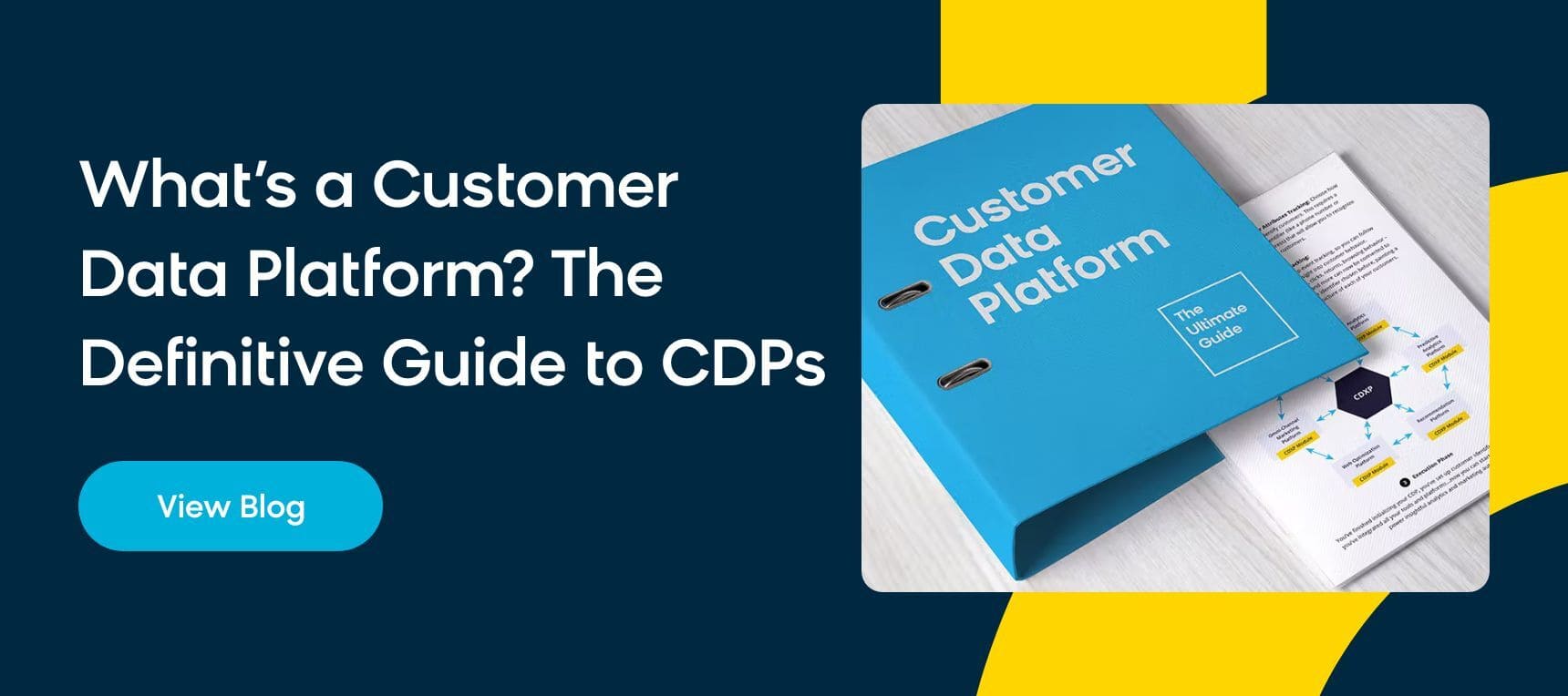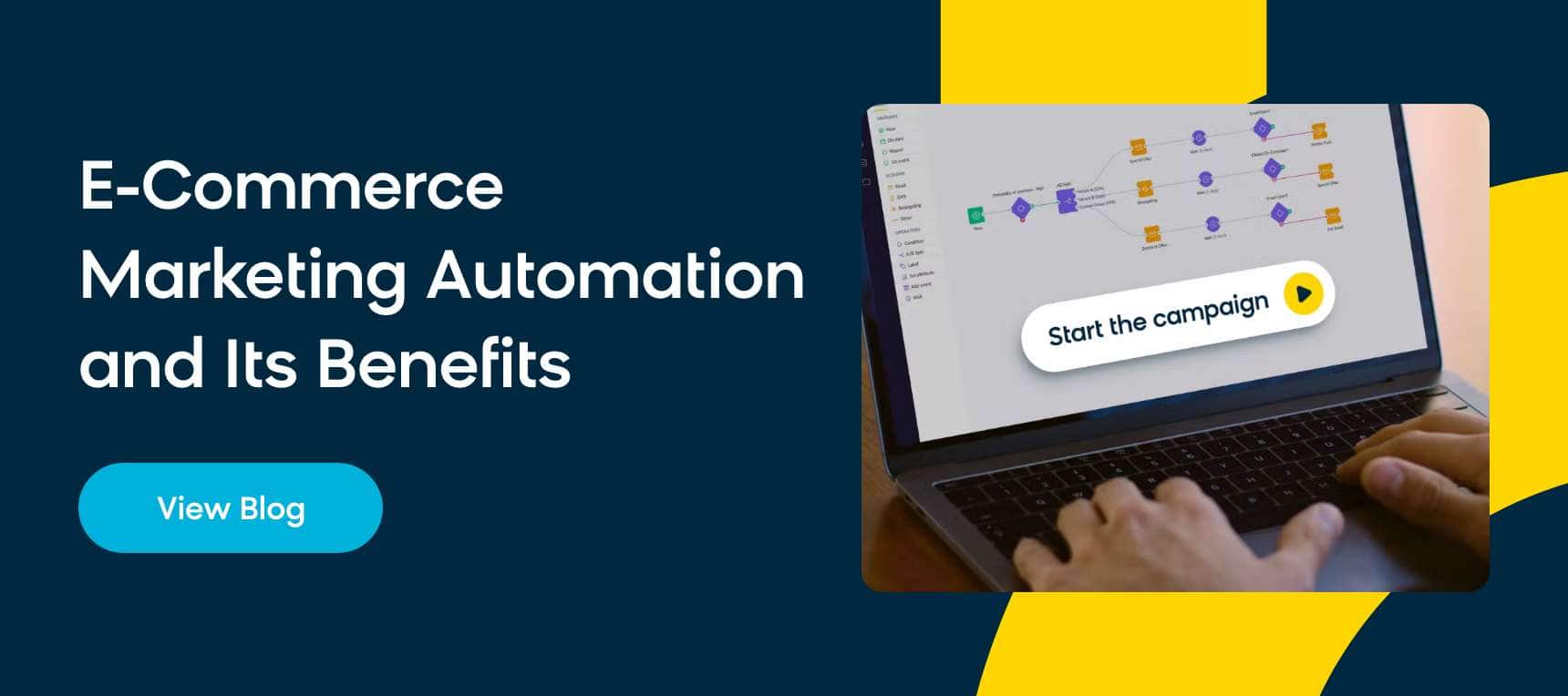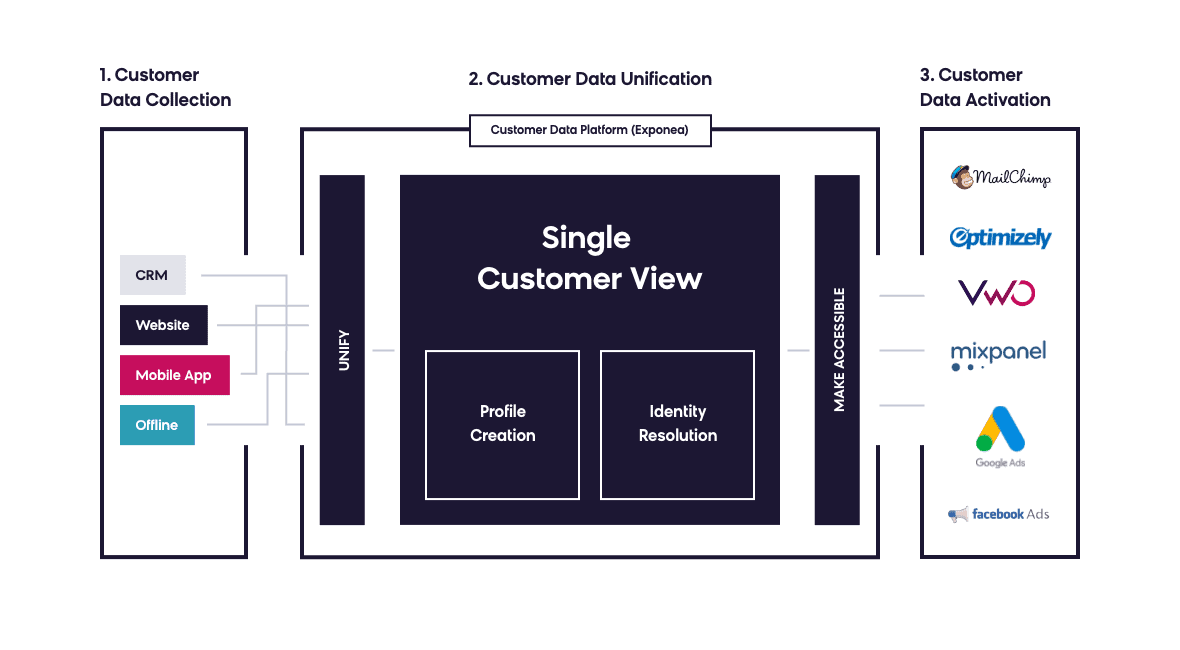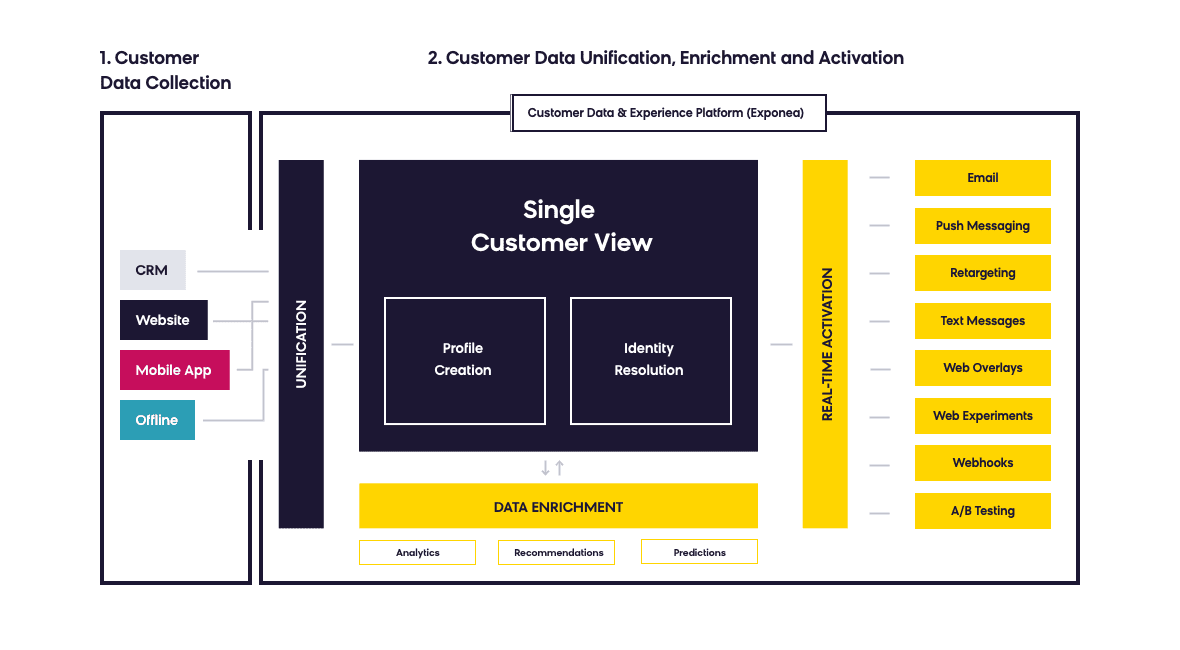Every marketer understands the importance of collecting and utilizing customer data to streamline your customer relationship management, your marketing efforts, and to increase conversions. But before you can put all of your customer data to work, you need to choose the right tools for the job.
Because it can be challenging to make sense of all the customer data collected and activate it in meaningful ways. You likely have multiple channels and a myriad of data sources that need to be consolidated and organized into understandable unified customer profiles. And that’s just the beginning — leveraging your customer data to execute marketing campaigns that drive increased customer lifetime value is just as important.
That’s why a customer data platform (CDP) and marketing automation are such vital tools for your marketing tech stack. And to make your efforts shine across every stage of the customer journey, you need a solution that brings both of these tools together.
Let’s see what a CDP and marketing automation tool can do for your business, and dig into why it’s important to get a solution that combines the best of both worlds.
What Is a Customer Data Platform?
A customer data platform is a marketing technology that collects first-party customer data from various sources, such as online and offline interactions, and combines them into a single customer view. This view provides a unified customer profile, and gives you insights into customer behavior that were previously unattainable.
Consolidating all of your customer data is a CDP’s primary function. A CDP’s ability to manage customer data will ultimately give your marketing team key insights and data points needed to execute personalized marketing campaigns that drive revenue.
Once your CDP completes its data management responsibilities, it integrates all your customer information into a single unified database, it builds a complete picture of your customers on an individual level. A CDP makes all your data make sense, allowing you to harness a complete view of your customers to build effective and personalized marketing campaigns.
With a CDP, marketers can collect, segment, and activate their customer data, which allows for more accurate targeting, improved engagement, and increased revenue.
Read This Next: What’s a Customer Data Platform? The Definitive Guide to CDPs
The Benefits of a Customer Data Platform
Some of the key benefits of incorporating a CDP into your marketing strategy include:
Unified Data
A CDP creates a comprehensive view of the customer, which allows marketers to know what customers are doing across all marketing channels. This means that marketers can align their messaging with specific touchpoints in the customer journey, ensuring a more targeted approach for meaningful engagement.
Improved Customer Experience
A CDP helps marketers create relevant and personalized experiences at scale for their customers during every stage of their buying journey. This includes personalized messaging, content, and recommendations that are tailored to the customer’s interests and preferences.
Improved ROI
A CDP can help increase ROI by providing marketers with a more accurate and in-depth understanding of their customers. With this valuable information, marketers can optimize their campaigns and focus on the channels and strategies that drive the most conversions.
What Is Marketing Automation?
Marketing automation systems allow marketers to replace manual marketing tasks with automation software that can both manage and monitor routine workflows.
These workflows might span multiple channels, such as mobile, web, and email marketing, and may include tasks such as lead management, email nurturing, remarketing ads, personalizing content, and retargeting messages.
Put simply, marketing automation can put your most straightforward marketing efforts on autopilot, so you don’t get bogged down in mundane tasks. It’s a technology designed to help marketing teams create predefined customer journeys using real-time triggers, built-out scenarios, and predicted behaviors.
With the right marketing automation platform, you can create targeted, personalized campaigns that are tailored to the customer’s needs and preferences — without the hassle of building them over and over.
Read This Next: Ecommerce Marketing Automation and Its Benefits
The Benefits of Marketing Automation
Some of the key benefits of incorporating marketing automation into your ecommerce strategy include:
Increased Productivity
Marketing automation enables teams to automate repetitive tasks, such as email campaigns, social media campaigns, and lead nurturing. This frees up time for marketers to focus on tasks that need a more human touch, like creating more engaging and personalized content for their customers.
Improved Lead Quality
Marketing automation helps marketers capture, nurture, and score leads more accurately. This means that marketers can target the leads that are most likely to convert, which can lead to increased conversions and revenue.
Better Data Insights
Marketing automation platforms provide marketers with detailed analytics and reporting, which can be used to optimize campaigns and improve ROI. With a deeper understanding of each customer based on their habits and preferences, you can make data-driven decisions about nearly every aspect of your communications and get more from your campaigns.
Why You Need a CDP + Marketing Automation
Now that we know how important a CDP and marketing automation software are for your business, it’s time to consider how these tools work within your marketing tech stack — because close collaboration is absolutely vital for all your platforms.
Building out your marketing technology toolkit is all about making sure your platforms are working in sync. If you have a system of separate solutions, they need to seamlessly collaborate with each other to make your marketing efforts run smoothly.
Standalone customer data platforms can’t execute campaigns, and marketing automation tools can’t ingest and build out customer profiles from all the data you have available, so integration between these two platforms needs to be absolutely perfect.
That’s why a CDP with native marketing automation is such a valuable tool for marketers. With a platform that incorporates both solutions, you are guaranteed to have your customer data and marketing automation working hand in hand.
What You Get With a Standalone CDP
With a standalone CDP, you get exactly what you expect: a customer data platform without extra capabilities. It ingests all of a company’s first-party data and builds complete pictures of all of your customers. That’s it.
This data is accessible for use by other systems, like email marketing platforms, campaign management tools, and various online channels, but a standalone CDP cannot execute campaigns. It needs dedicated tools that can make use of the comprehensive data it collects, and a lackadaisical add-on won’t always do the trick.
What You Get With a CDP With Marketing Automation
A customer data platform coupled with marketing automation is the next evolution of a CDP. It combines all the benefits of a standalone CDP with marketing campaign tools, creating a single, powerful, and customer-centric marketing platform.
This gives marketers the complete toolset they need for creating incredible customer experiences by bringing together AI-driven marketing capabilities, real-time analytics, and UX optimization — all natively powered by a CDP.
A CDP combined with marketing automation simplifies workflows and increases productivity since it merges frequently used tools into one integrated interface. Now you don’t have to connect your platforms and pray that your data is syncing in real time with your automation efforts. Instead, you can rest assured that it’s all working seamlessly in one platform, with a main hub for you to orchestrate truly unique and highly effective campaigns.
Ecommerce Personalization Powered By a CDP
A CDP plus marketing automation tool can also put your company ahead of the game when it comes to powering ecommerce personalization efforts.
With a CDP, you can confidently map out your customer’s journey, understanding their likes, dislikes, and shopping habits. After you have collected customer data to gain this understanding of your customers, you can begin to personalize content and shopping journeys for them to ensure they can go from browsing to purchase with your brand.
Bloomreach Engagement: The Perfect Platform for All Your Marketing Needs
A CDP with marketing automation is an essential component of any modern marketing tech stack. By unifying customer data and automating marketing efforts, marketers can gain a more holistic view of their customers, improve targeting and engagement, and drive more significant ROI.
You need a tool that can do it all, seamlessly bringing together all customer insights with automation and execution capabilities to create next-level campaigns. And that’s exactly what you get with Bloomreach Engagement.
Our all-in-one marketing solution combines the power of a CDP and marketing automation into a single platform with real-time customer data, automation, AI, and analytics. We don’t just offer data ingestion and automation — Bloomreach Engagement helps marketers activate their data and build personalized campaigns from one place, spanning 13 channels and reaching millions of customers.
Ready to see what our game-changing platform can do for your business? Check out the benefits of powering your marketing automation with a customer data engine to learn more.


















